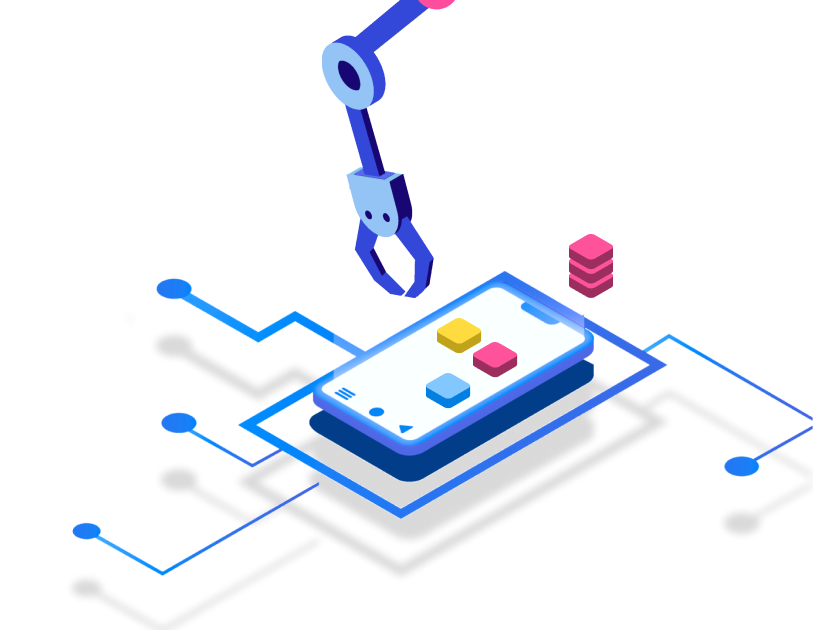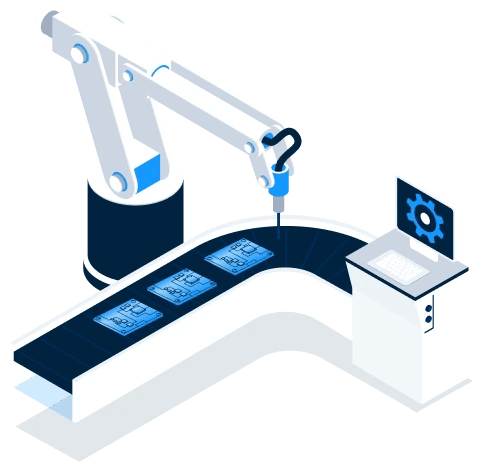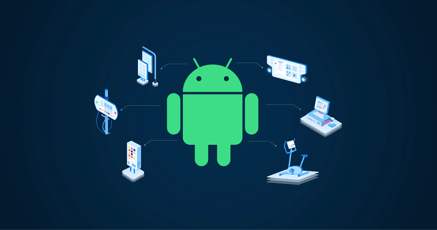In the manufacturing sector, an IT department can have anything from a few dozen to tens of thousands of devices that it must manage. In this world of Industry 4.0—the Internet of Things (IoT), as coined by innovator Kevin Ashton in 1999—digital devices in manufacturing can carry out any number of tasks, such as capturing data, providing a dashboard of information, or being an interface between human and machine.
Managing a few devices at a single branch can be difficult. Managing a fleet of devices across several branches is completely impossible if one must have direct physical access to the device.
And the growing complexity of supply chains and processes means that fleets are growing.
The solution to this is Mobile Device Management (MDM), a means of remotely managing every part of a device’s lifecycle from beginning to end.
In this article, we will look at what MDM is, how to set up MDM in manufacturing, what the benefits of MDM are, and the easiest way to get a fleet of devices ready, so they can be managed through an MDM Manufacturing dashboard.
MDM Manufacturing: What Types of Devices Can Be Managed?
Theoretically, any device with an internet connection can be managed with an MDM system. In practice, however, devices running Android are more likely to be used.
Android is the operating system of choice for MDM in manufacturing. The Android codebase has native support for MDM, although the underlying code must be tweaked to make the MDM features fully functional. This is what emteria has done with its custom-built emteria.OS.
emteria.OS is a port of Android that includes MDM out-of-the-box. The use of emteria.OS on Raspberry Pi devices is especially popular but there are a variety of hardware through which emteria.OS is used in an industrial context.
Some of the industrial devices that can be managed in an MDM Manufacturing system are:
- Shop floor dashboards
- Data capture terminals
- HMI (Human-Machine Interface) devices
- Industrial vending machines
- Robotic devices
- Project management devices
- Single-app (“Kiosk-mode”) devices for various purposes
- Other digital devices
There is no limit to the type of device that can be used. By installing Android on Raspberry Pi—a quick and painless task with emteria.OS—and then building a device around the underlying Pi hardware, a company can create virtually any type of device. It’s simply a matter of peripherals and how those peripherals communicate with the OS on the Pi.
How to set up MDM in manufacturing
The easiest way to explain this is to show it, and so we’ll use emteria’s Device Hub for examples.
Emteria’s Device Hub is a fully-fledged suite for MDM in manufacturing. All fleet devices—whether Raspberry Pi or otherwise—that run emteria.OS can be registered in the Device Hub and thereby be managed completely by a Raspberry Pi fleet manager.
The first thing to know is that the Device Hub’s MDM Manufacturing features run entirely in the browser. A fleet manager simply needs to log in to the Device Hub from any computer in the world to manage all the fleet devices that have been previously registered there.
In emteria’s Device Hub, it is possible to configure different groups of devices, as shown in the screenshot below. Each of these groups would correspond to a particular fleet, such as one particular branch, several branches in a location, a specific type of device, etc.

The first step to configuring MDM in manufacturing is to provision each device. It allows predefining a set of configuration options, which will be automatically applied to the devices during the installation and the first device boot. This means configuring the device so that it can be handed off to a production environment. This can all be done remotely via emteria’s Device Hub.
Device Provisioning in an MDM manufacturing context would mean configuring:
- The screen,
- Device policies,
- Device branding,
- which components should be enabled or disabled (for example, disabling the camera for devices used in a sensitive environment, such as in the pharma industry), and
- numerous other device-specific elements.

Using the device provisioning feature, MDM Manufacturing Fleet Managers can configure devices without needing physical access to the device.
Once the device has been provisioned, the Device Hub immediately starts receiving signals from the device to determine its health and its policy status. This is crucial for compliance and proper app management.
Most mobile device management systems can be configured to track the physical location which is useful for removable devices should they ever get stolen or lost.
In the emteria Device Hub’s Devices screen, an MDM Manufacturing Fleet Manager can get an immediate overview of each device, whether it is online, whether it is currently complying with device policies and other basic info about the device.

To learn more about that specific device, the MDM Manufacturing Fleet Manager can click the device to drill down into detailed data.
In emteria’s Device Hub, the MDM Manufacturing Fleet Manager can newly assign policies to ensure the device is compliant.

The way that the MDM Manufacturing Fleet Manager changes policies—or takes any action on the device—is by executing commands to the device. These commands can trigger anything on the device, from applying policy changes to changing system settings to installing or uninstalling an app.

Through MDM Manufacturing, updating the OS is a piece of cake. One can update all devices at once, a single test device, or a group of devices. These “Over-The-Air software updates,” as they are called, are crucial to keeping devices in working order. And running the updates through an MDM Manufacturing interface such as emteria’s Device Hub is as simple as executing a single command.
It is also possible to roll back any failed updates.
Which manufacturers can benefit from MDM?
Many types of manufacturers can use MDM Manufacturing to improve quality, safety, and efficiency. Here are just some examples:
MDM automotive industry
The automotive industry has long been at the forefront of IoT embedded systems. They have used various operating systems for their infotainment devices, and lately have started adopting Android.
For company vehicles, these devices can be connected to an MDM Automotive system to enable physical location tracking and also to push updates to the device when needed. This is especially vital in logistics, where trucks need to be tracked and must also regularly be provided with the latest maps for navigation.
Emteria has also done work with a smart parking meter manufacturer. The device has emteria.OS running on it, and is connected to the Device Hub so that it can be monitored and updated as needed.
MDM pharmaceutical industry
MDM in manufacturing is crucial for the pharmaceutical industry, where the highest standards of cleanliness must be maintained to prevent contamination of products. Custom-built devices fitted with sensors that capture information such as temperature, humidity, air contaminants, etc., feed that data to an application running on a specific operating system, such as emteria.OS.
To maintain the integrity of production, it is vital for fleet managers to be able to regularly monitor the health of these devices remotely.
MDM supply-chain monitoring
Supply-chain monitoring devices straddle all manufacturing sectors—pharma, automotive, fashion, chemical, food and beverage, etc. MDM in manufacturing is vital to keep everything from sensors to project management applications running smoothly in the supply chain sector.
Two important points about MDM in manufacturing
Choose the right company to do your MDM
The backend required to implement a full-blown MDM Manufacturing solution is immense. It isn’t merely a matter of having an interface to manage all the devices. A proper infrastructure must exist to take care of everything from new code-builds to updates and rollbacks. That infrastructure must be reliable in the extreme because, if it ever goes down, fleet managers would be locked out of managing the devices under their care.
It takes a well-established company to maintain the backend that powers the MDM features, and fleet managers should do their due diligence before settling on a service provider.
Choose the right operating system for your devices
The other factor is the operating system itself. The important elements to choosing this are two-fold:
- The capabilities of the OS itself, e.g., if it is user-friendly and offers all the required functionality for your particular device.
- If it has MDM capabilities built into it.
Linux was once a popular choice for IoT devices, but users have grown accustomed to slick user interfaces and intuitive touch screens, giving Android the edge.
Stock Android does come prepackaged with the skeleton structure necessary to hook it into an MDM system, but it doesn’t work out of the box. Programmers need to specifically code the “meat and flesh” into this skeleton structure, and then hook that into the infrastructure supporting it. Few solutions for Android exist that implement MDM and which are also easy to install.
That’s precisely what emteria solved with emteria.OS which is based entirely on Android. Emteria.OS comes out of the box with full MDM support and emteria has built and maintains the infrastructure required to keep that MDM functionality working reliably.
Advanced MDM in manufacturing
As we get into the details of MDM, advanced manufacturing features come into play that are out of the scope of this article. But if you wish to learn more about these features and how emteria can help you implement MDM in manufacturing, book a live demo. ⬇️
Build unique Android products, manage them remotely
See why emteria is the chosen Android™ customization & management platform for product builders — build Android products based on your requirements with all enterprise features you need.







